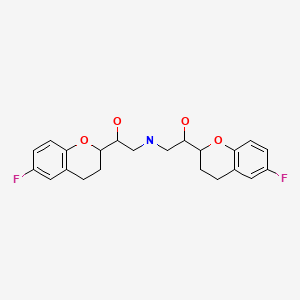CASRN: 99200-09-6

Drug Levels and Effects
Summary of Use during Lactation
Because no information is available on the use of nebivolol during breastfeeding, an alternate drug may be preferred, especially while nursing a newborn or preterm infant.
Drug Levels
The excretion of beta-adrenergic blocking drugs into breastmilk is largely determined by their protein binding. Those with low binding are more extensively excreted into breastmilk.[1] Accumulation of the drugs in the infant is related to the excretion rate. With 98% protein binding and a relatively long half-life, nebivolol presents a moderate risk for accumulation in infants.
Maternal Levels. Relevant published information was not found as of the revision date.
Infant Levels. Relevant published information was not found as of the revision date.
Effects in Breastfed Infants
Relevant published information was not found as of the revision date.
Effects on Lactation and Breastmilk
Relevant published information was not found as of the revision date.
Alternate Drugs to Consider
References
- 1.
- Riant P, Urien S, Albengres E, et al. High plasma protein binding as a parameter in the selection of betablockers for lactating women. Biochem Pharmacol. 1986;35:4579–81. [PubMed: 2878668]
Substance Identification
Substance Name
Nebivolol
CAS Registry Number
99200-09-6
Drug Class
Breast Feeding
Lactation
Adrenergic beta-Antagonists
Antihypertensive Agents
Vasodilator Agents
Disclaimer: Information presented in this database is not meant as a substitute for professional judgment. You should consult your healthcare provider for breastfeeding advice related to your particular situation. The U.S. government does not warrant or assume any liability or responsibility for the accuracy or completeness of the information on this Site.
Publication Details
Publication History
Last Revision: May 17, 2021.
Copyright
Attribution Statement: LactMed is a registered trademark of the U.S. Department of Health and Human Services.
Publisher
National Institute of Child Health and Human Development, Bethesda (MD)
NLM Citation
Drugs and Lactation Database (LactMed®) [Internet]. Bethesda (MD): National Institute of Child Health and Human Development; 2006-. Nebivolol. [Updated 2021 May 17].